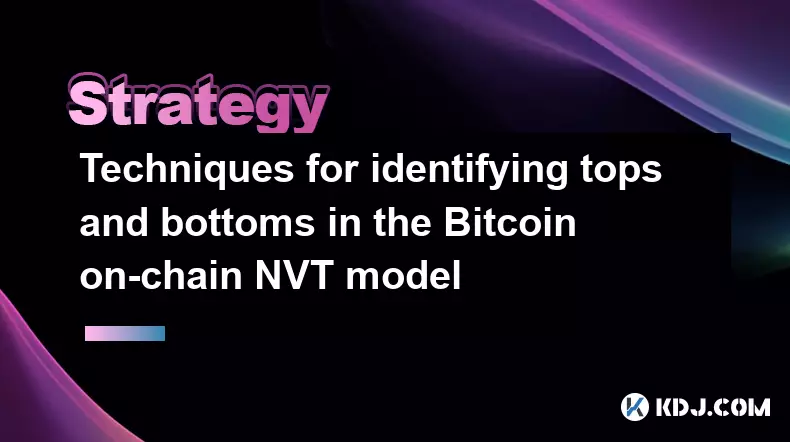-
 bitcoin
bitcoin $109523.663807 USD
-0.13% -
 ethereum
ethereum $4019.526508 USD
2.06% -
 tether
tether $1.000482 USD
0.00% -
 xrp
xrp $2.776815 USD
0.18% -
 bnb
bnb $958.942396 USD
0.12% -
 solana
solana $204.294698 USD
3.84% -
 usd-coin
usd-coin $0.999693 USD
0.00% -
 dogecoin
dogecoin $0.232115 USD
2.09% -
 tron
tron $0.338028 USD
0.84% -
 cardano
cardano $0.790920 USD
1.50% -
 hyperliquid
hyperliquid $44.871443 USD
5.60% -
 ethena-usde
ethena-usde $1.000322 USD
0.04% -
 chainlink
chainlink $21.034165 USD
2.60% -
 avalanche
avalanche $28.794831 USD
-0.54% -
 stellar
stellar $0.360466 USD
1.24%
What percentage of the currency circle actually makes money?
The probability of profiting in cryptocurrency depends on factors like market knowledge, timing, risk tolerance, and patience, making it a dynamic and challenging endeavor.
Jan 09, 2025 at 05:09 pm

- Definition of "making money" in the cryptocurrency circle
- Identifying the various forms of "money-making" in the industry
- Assessing the probability and factors involved in earning profits
- Exploring the potential rewards and associated risks
Determining the exact percentage of individuals who make money in the cryptocurrency circle is a complex task due to the industry's dynamic and decentralized nature. However, by examining the different ways in which participants interact with the market, we can deduce some insights.
1. Cryptocurrency TradingCryptocurrency trading involves buying and selling digital assets with the aim of profiting from price fluctuations. This can be done through various platforms, both centralized (such as Coinbase and Binance) and decentralized (e.g., Uniswap and PancakeSwap).
- Potential for Profits: Trading can yield significant profits, especially for those with a keen understanding of the market and the ability to identify profitable trading opportunities.
- Risks: Trading also carries substantial risks. Market volatility, manipulation, and hacking are common threats that traders need to be aware of.
Cryptocurrency investment entails holding digital assets for the long term with the expectation of their value increasing over time. This is often referred to as "hodling."
- Potential for Profits: Cryptocurrency investment can be highly rewarding, especially if done during prolonged market bull runs.
- Risks: However, investing in cryptocurrencies is not without risks. Market downturns, regulatory uncertainty, and technological developments can impact the value of digital assets.
Cryptocurrency mining involves using specialized computer hardware to process transactions on a given blockchain network and earn rewards in the form of digital assets.
- Potential for Profits: Mining can be a profitable venture, particularly during periods of high cryptocurrency prices.
- Risks: Mining operations consume considerable electricity and require constant investment in specialized hardware, making it a costly and competitive endeavor.
Cryptocurrency lending and borrowing platforms allow users to lend their digital assets in exchange for interest or borrow funds using cryptocurrencies as collateral.
- Potential for Profits: Lenders can earn interest on their cryptocurrencies, while borrowers can obtain loans without the need for traditional financial institutions.
- Risks: Lending and borrowing involve risks such as counterparty default and price fluctuations that can potentially lead to losses.
Yield farming is a method of earning rewards on deposited cryptocurrencies by participating in decentralized finance (DeFi) protocols. These protocols offer incentives in the form of interest or tokens for liquidity provision, staking, and lending.
- Potential for Profits: Yield farming can generate high returns during periods of high market activity.
- Risks: Yield farming platforms are often complex and unregulated, posing potential risks to users, including smart contract vulnerabilities and impermanent loss.
The probability of making money in the cryptocurrency circle depends on several factors:
- Knowledge and Understanding: A deep understanding of the cryptocurrency market, trading strategies, investment principles, and risk management techniques is essential.
- Timing: Entering and exiting the market at the right time can significantly impact profitability.
- Risk Tolerance: Individuals should assess their own risk tolerance and invest only what they can afford to lose.
- Patience: Cryptocurrencies are volatile assets, and it often takes time for investments to mature.
A: Making money in the cryptocurrency circle requires skill, knowledge, and an understanding of the market's risks and rewards. It is not a guaranteed path to wealth.
Q: What is the minimum amount of money I need to invest in cryptocurrencies?A: You can invest any amount of money in cryptocurrencies, but it is important to start with a sum that you can afford to lose.
Q: What is the best way to make money from cryptocurrencies?A: There is no single "best" way to make money from cryptocurrencies. Different methods have different risks and rewards, and the choice depends on your individual circumstances.
Disclaimer:info@kdj.com
The information provided is not trading advice. kdj.com does not assume any responsibility for any investments made based on the information provided in this article. Cryptocurrencies are highly volatile and it is highly recommended that you invest with caution after thorough research!
If you believe that the content used on this website infringes your copyright, please contact us immediately (info@kdj.com) and we will delete it promptly.
- Rare 1p Coin Could Fetch £200,000: Are You Holding a Fortune?
- 2025-09-27 12:25:13
- MAGACOIN Finance: Buzz, Risks, and the Altcoin Stampede
- 2025-09-27 12:25:13
- Crypto Wallets & Utility Tokens: What's the Hype?
- 2025-09-27 12:30:02
- Shiba Inu's Burn Rate & Crypto Payroll: A New York Perspective
- 2025-09-27 12:45:11
- Grayscale, Near Protocol, and On-Chain Innovation: A New Era for Crypto?
- 2025-09-27 12:45:11
- Punjab Govt, Centre, and the Financial Package: A Tug-of-War?
- 2025-09-27 12:30:02
Related knowledge

Practical parameter settings for a Bitcoin multi-timeframe moving average system
Sep 18,2025 at 10:54pm
Optimizing Timeframe Combinations for Bitcoin Trading1. Selecting appropriate timeframes is crucial when building a multi-timeframe moving average sys...

How can I filter out false breakouts in Dogecoin high-frequency trading?
Sep 22,2025 at 01:00am
Understanding False Breakouts in Dogecoin Trading1. A false breakout occurs when Dogecoin's price appears to move beyond a defined support or resistan...

Techniques for identifying tops and bottoms in the Bitcoin on-chain NVT model
Sep 20,2025 at 07:54pm
Understanding the NVT Model in Bitcoin Analysis1. The Network Value to Transactions (NVT) ratio is often described as the 'P/E ratio' of the cryptocur...

What does the surge in open interest in Bitcoincoin futures mean?
Sep 20,2025 at 11:18pm
Understanding the Surge in Dogecoin Futures Open Interest1. A surge in open interest within Dogecoin futures indicates a growing number of active cont...

How can I use the Ethereum USDT premium to gauge market sentiment?
Sep 18,2025 at 11:55pm
Understanding the Ethereum USDT Premium1. The Ethereum USDT premium refers to the price difference between USDT (Tether) traded on Ethereum-based plat...

What should I do if Ethereum staking yields decline?
Sep 20,2025 at 06:18am
Understanding the Causes Behind Declining Ethereum Staking Yields1. The Ethereum network transitioned to a proof-of-stake consensus mechanism with the...

Practical parameter settings for a Bitcoin multi-timeframe moving average system
Sep 18,2025 at 10:54pm
Optimizing Timeframe Combinations for Bitcoin Trading1. Selecting appropriate timeframes is crucial when building a multi-timeframe moving average sys...

How can I filter out false breakouts in Dogecoin high-frequency trading?
Sep 22,2025 at 01:00am
Understanding False Breakouts in Dogecoin Trading1. A false breakout occurs when Dogecoin's price appears to move beyond a defined support or resistan...

Techniques for identifying tops and bottoms in the Bitcoin on-chain NVT model
Sep 20,2025 at 07:54pm
Understanding the NVT Model in Bitcoin Analysis1. The Network Value to Transactions (NVT) ratio is often described as the 'P/E ratio' of the cryptocur...

What does the surge in open interest in Bitcoincoin futures mean?
Sep 20,2025 at 11:18pm
Understanding the Surge in Dogecoin Futures Open Interest1. A surge in open interest within Dogecoin futures indicates a growing number of active cont...

How can I use the Ethereum USDT premium to gauge market sentiment?
Sep 18,2025 at 11:55pm
Understanding the Ethereum USDT Premium1. The Ethereum USDT premium refers to the price difference between USDT (Tether) traded on Ethereum-based plat...

What should I do if Ethereum staking yields decline?
Sep 20,2025 at 06:18am
Understanding the Causes Behind Declining Ethereum Staking Yields1. The Ethereum network transitioned to a proof-of-stake consensus mechanism with the...
See all articles










































































